The vibrant orange to pink, wrinkled crust fungus (Phlebia radiata) often looks like someone splattered it on the tree. The super fresh ones look straight out of a science fiction novel about invading alien amoebas! It is a bizarre mushroom, and absolutely fascinating. The bright coloring and wrinkled surface make it one of many eccentric fungi among the weird and wonderful mushrooms in the fungi kingdom.
The wrinkled crust fruits on dead wood, and often the bodies of several specimens combine to create a long crust patch. It is often bright orange, or pink, or somewhat brownish-purple. The color can change significantly with age. This species grows widespread across North America and is most common on hardwood trees.
- Scientific Name: Phlebia radiata
- Common Names: Wrinkled crust fungus
- Habitat: Dead wood
- Edibility: Inedible
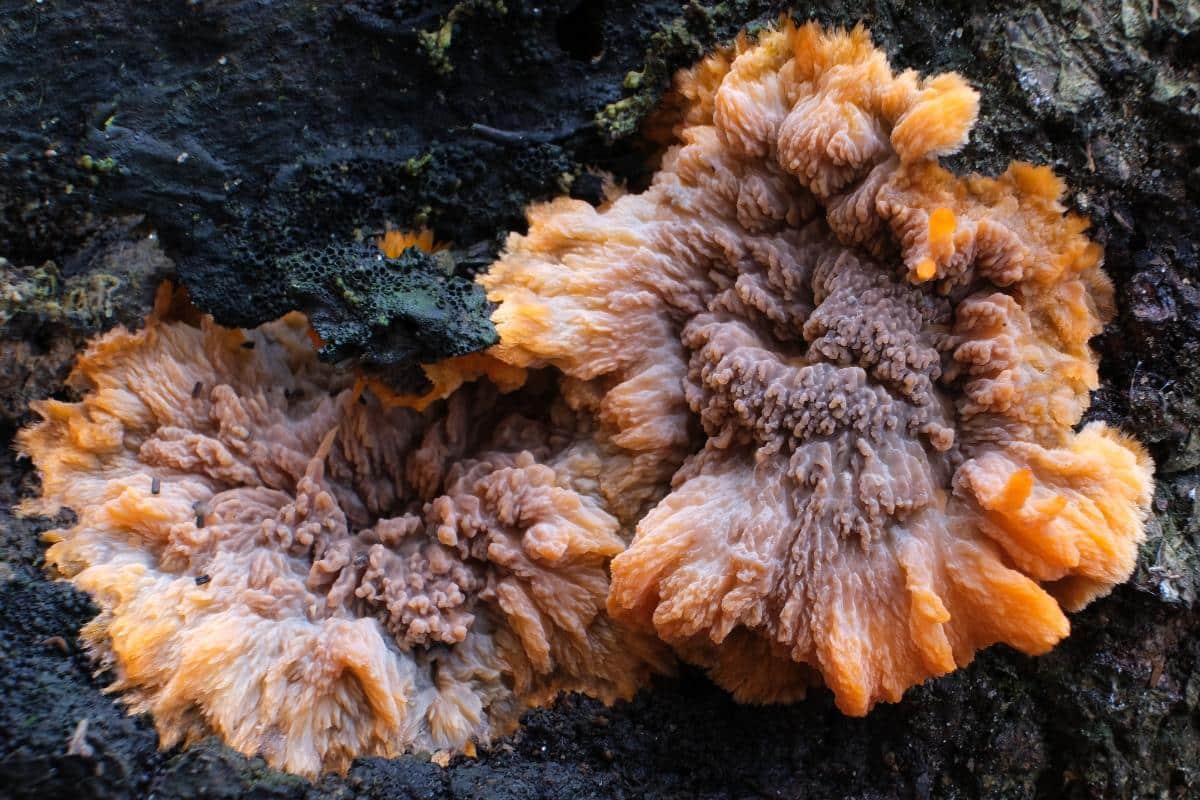
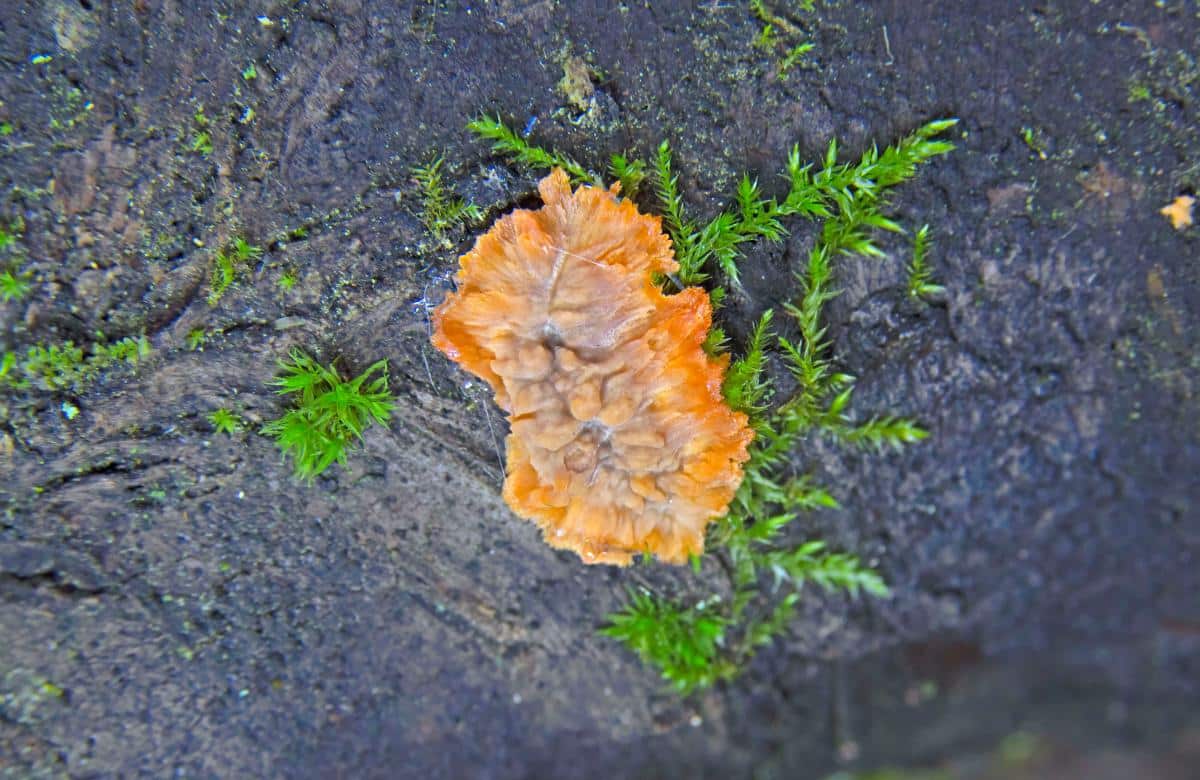
Jump to:
All About The Wrinkled Crust Fungus
The wrinkled crust fungus is a polypore family and is also commonly known as Merulius radiata. There was some debate over where this mushroom belonged taxonomically, but it is now settled where it started, in Phlebia. You may see it in guidebooks under either name.
Elias Magnus Fries described this species to science in 1821. He named it Phlebia radiata and later made it the type species for the entire genus in 1828. The genus name Phlebia comes from the Greek words “phleps” and “phleb,” which translate to veins. The name “radiata” is a description of the distinctive ray-like wrinkles or folds that spread out from the fruiting body’s center.
The wrinkled crust fungus has become a model organism to study white-rot saprotrophy. Scientists have sequenced and studied its genome extensively in various countries, especially Finland and the United States. The fungus is being studied for its biotechnological applications due to its ability to break down isolated lignins, lignin-like aromatic compounds, and xenobiotics. It can decompose wood and plant biomass of all kinds.
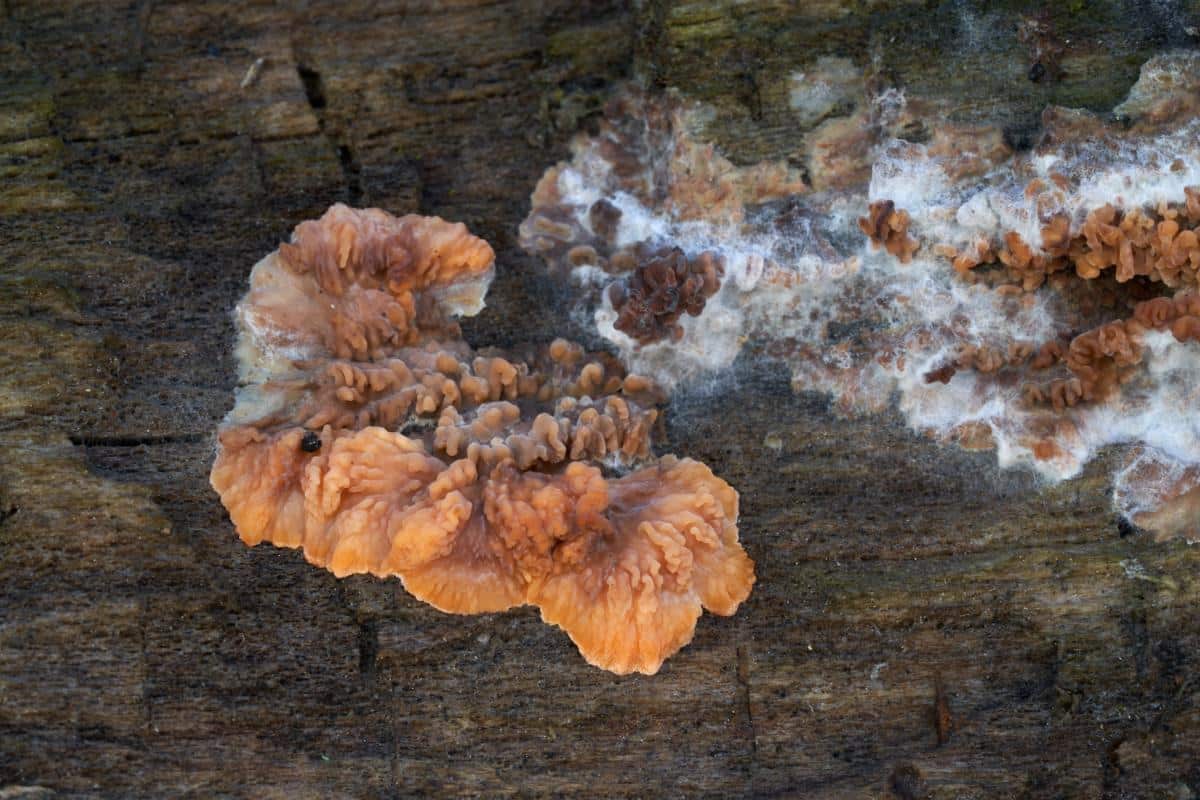
Wrinkled Crust Fungus Identification
Season
The wrinkled crust mushroom fruits spring, summer, and fall. It some areas, it may appear year-round.
Habitat
This mushroom grows on dead logs and stumps of conifers and hardwoods. It is more common on hardwoods, though. It does not grow on the ground. It may be a single specimen or several combined together.
The wrinkled crust is widely distributed in North America. It also occurs in Europe.
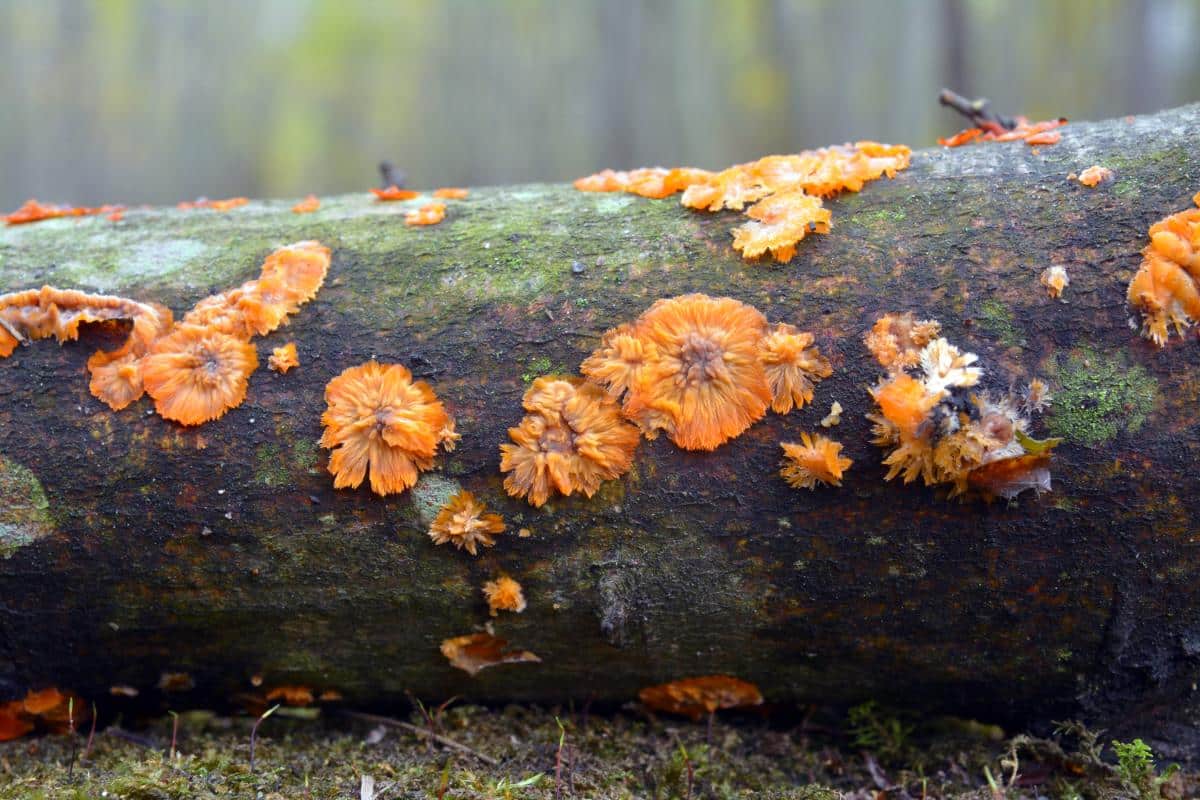
Identification
The wrinkled crust fungus grows flat against its surface like a crust. It does not grow a cap, gills, or a stem. It attaches directly to the wood and plays a vital role in forest ecosystems as a white rot decomposer. The fungus breaks it down wood and this process leaves behind bleached or fibrous cellulose residue. The affected wood becomes soft and stringy with a pale color.
The mushroom grows 1-4 inches across but often merges with neighboring fruiting bodies to create large, complex growths. When they merge, they might stretch up to 12 inches (30 cm) wide.
The wrinkled crust fungus has irregular wrinkles with folds that spread outward from a central point. This characteristic is what led to its species name, “radiata”. The wrinkles and folds radiate outwards from a single point. Sometimes, the crust fungus develops slightly folded edges that are covered in hair.
The fruiting body is waxy or gelatinous when fresh. It turns more brittle and crusty as it dries. The young specimens are bright orange to pink, usually with lighter edges. Mature specimens usually darken and develop brownish or purplish tones. The flesh’s soft texture hardens as the fruiting body ages.
Smell and Taste
The wrinkled crust fungus does not have any noticeable smell or distinctive taste,
Spore Print
The spore print of this species is white.
Key Identification Points
- Bright colors, often pink to orange to brownish-purple with age.
- Growing directly on wood
- The flesh is waxy or gelatinous to the touch (with age, it hardens and becomes crusty)
- No cap, stem, or gills
- Wrinkled surface with folds radiating from a central point
- The edge of the fungus is has a different color than the rest of the body (not always)
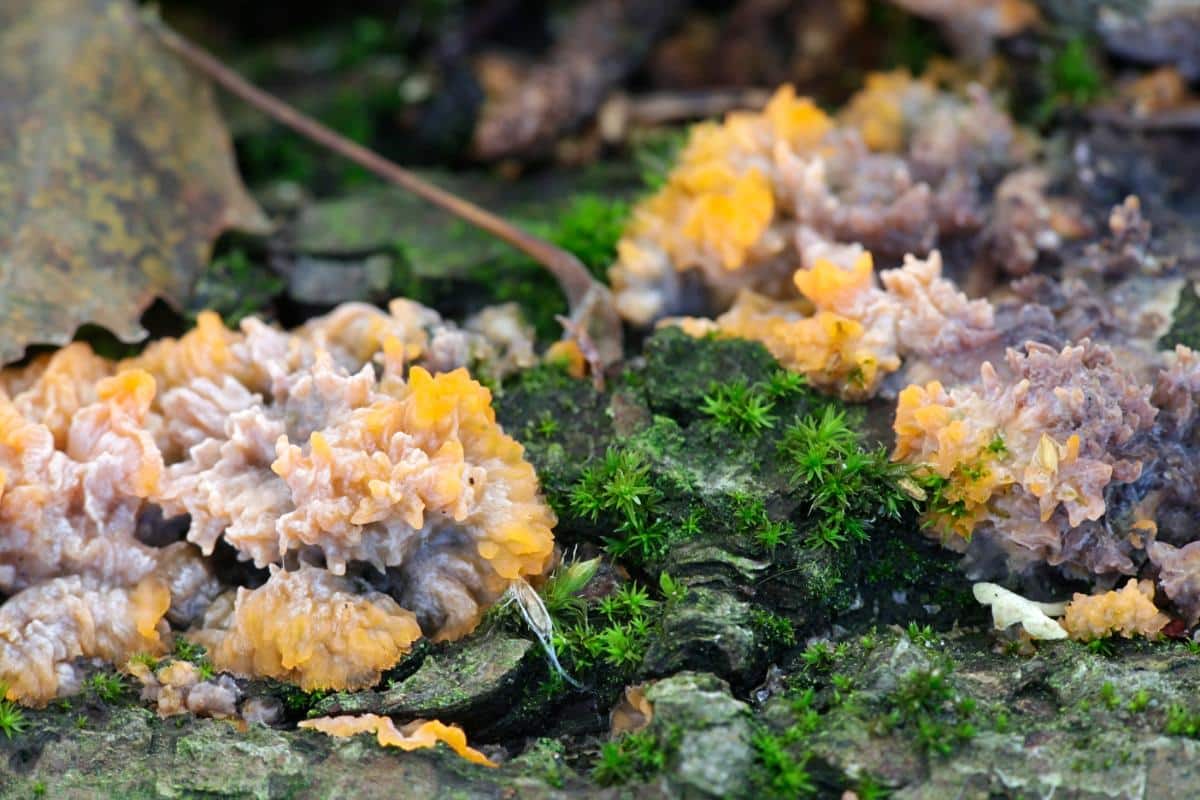
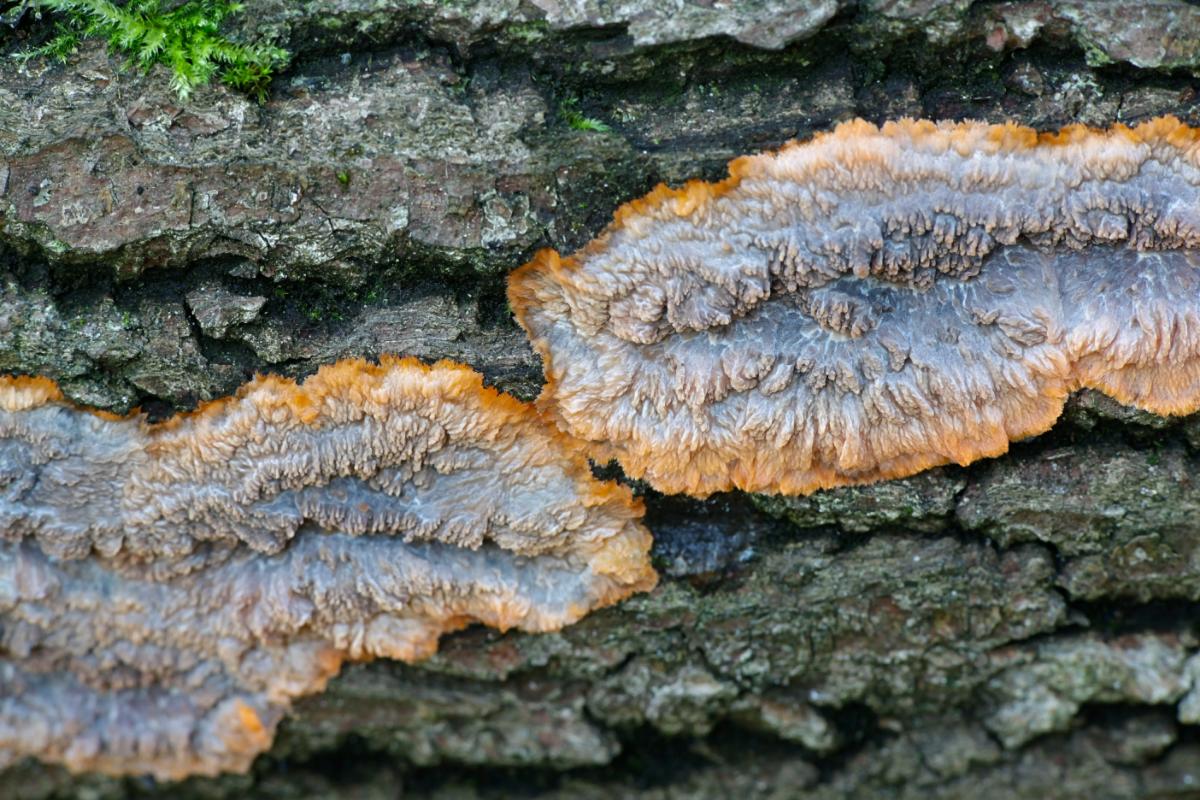
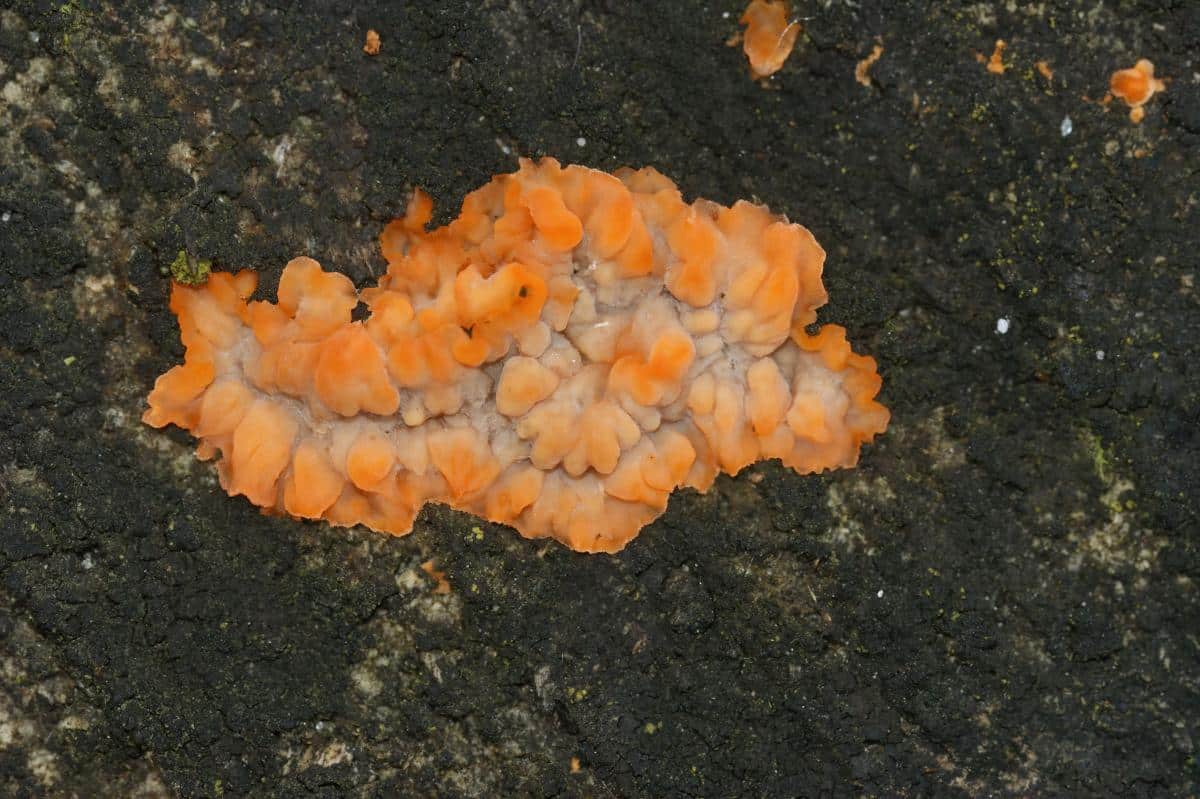
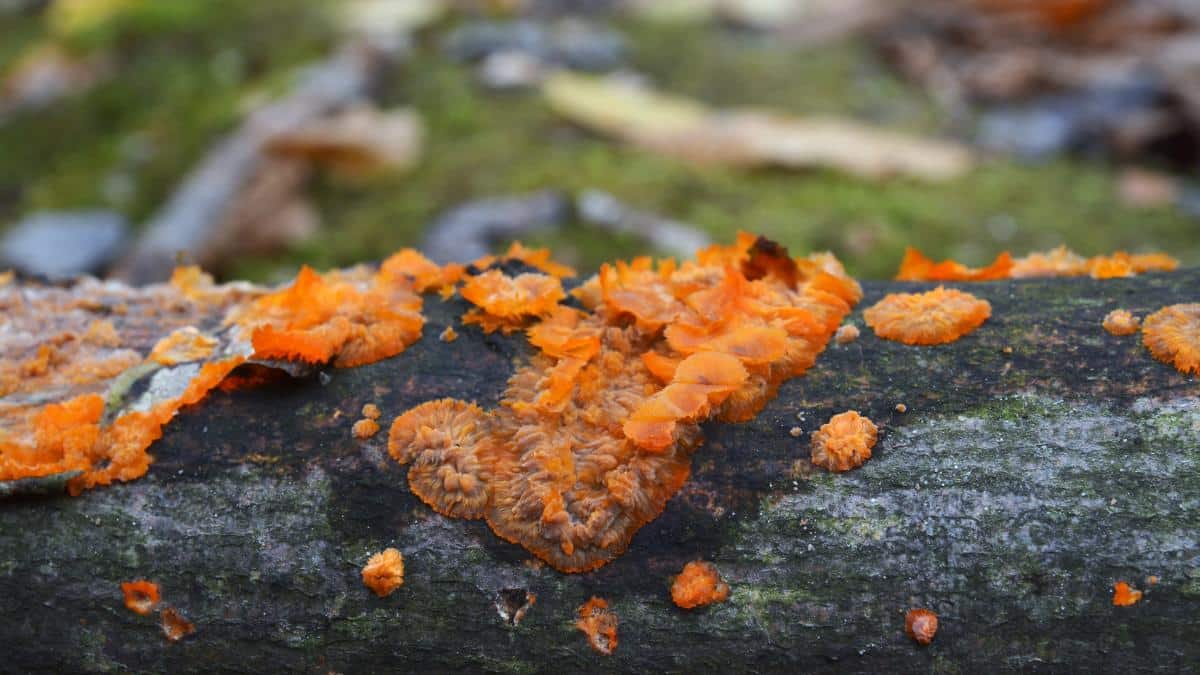
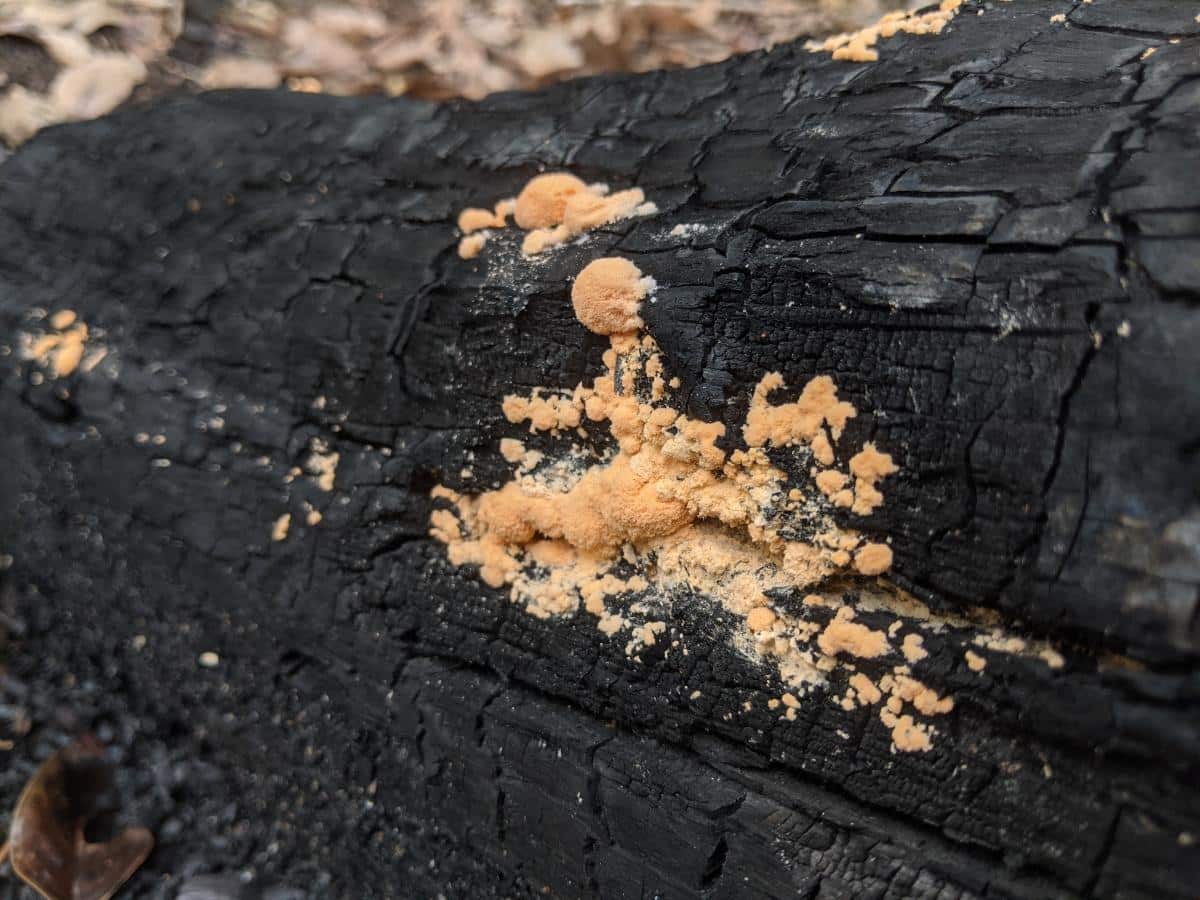
Wrinkled Crust Fungus Lookalikes
Botryobasidium vagum
This fungus produces thin, light-colored crusts that grow in similar environments to those of the wrinkled crust fungus. This species is white to cream-colored and usually doesn’t have the distinctive wrinkled surface that Phlebia radiata has, though.
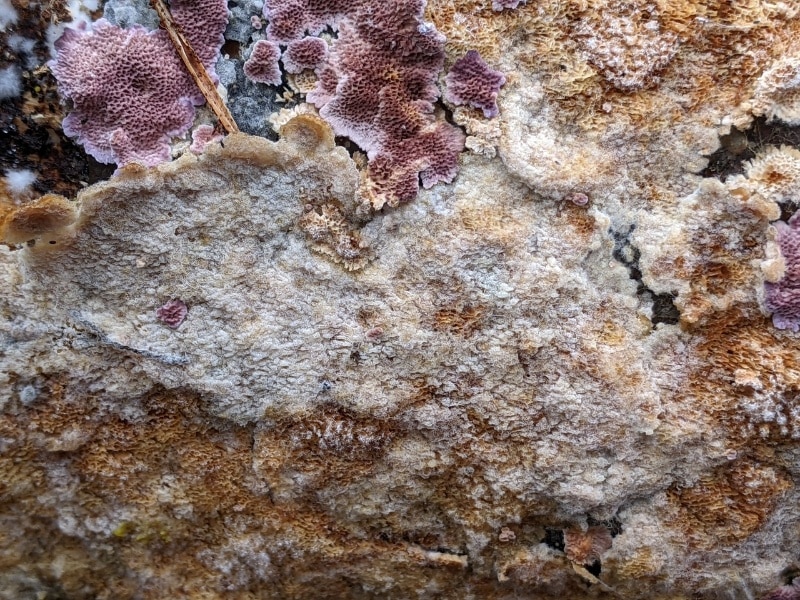
Scarlet waxcrust (Phlebia coccineofulva)
This related crust fungus also grown as a patch on dead wood. However, it has several key differences from the wrinkled crust fungus. It is bright reddish-orange and is always crusty – it is never gelatinous like the wrinkled crust. It also doesn’t have wrinkles or folds.
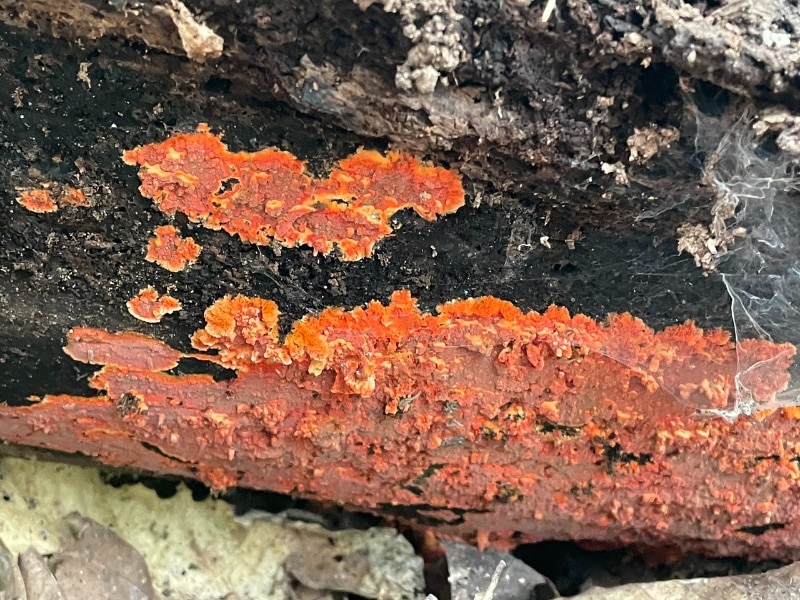
Meruliporia incrassata
This rot fungus is generally white to light tan or brown and grows on dead wood. It is not nearly as brightly colored as the wrinkled crust and it also isn’t gelatinous. It is often found in construction, old buildings, and the like.
Serpula lacrymans
This species is also brownish with a lighter edge, which makes it look like an older wrinkled crust. However, Serpula lacrymans is a dry rot fungus that is primarily found indoors. It is actually quite rare in the natural world. This rot fungus grows through damp mortar, masonry, and plaster, which lets it reach wood far from where it first started.
Bleeding Broadleaf Crust (Stereum rugosum)
This is another wrinkled crust fungus. You can tell them apart by their colors. S. rugosum is reddish-brown to tan in contrast to the distinctive orange-pink of the wrinkled crust. Another big difference is that pore surface of the bleeding broadleaf crust ‘bleeds’ and turns red when it is scratched (hence, its common name).
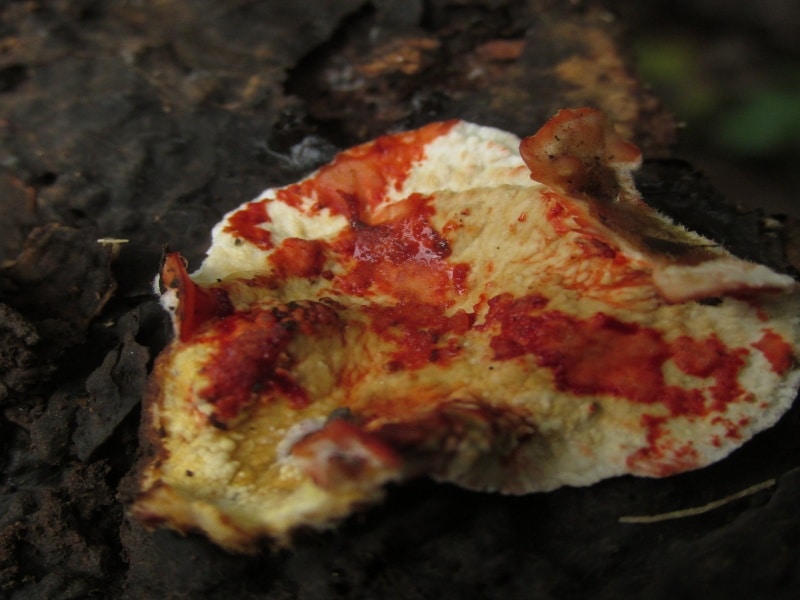
Wrinkled Crust Fungus Uses
The wrinkled crust fungus doesn’t have traditional medicinal uses, but scientists are learning more about its unique biochemical features. The fungus creates powerful lignin-degrading enzymes like manganese peroxidase and laccase that show great promise in biotechnology applications.
Phlebia species’ extracts might have antioxidant and antimicrobial properties, though P. radiata research is still new. The crust fungus’s value comes from being able to break down organic materials and pharmaceutical pollutants, which could help clean up environmental contamination.
Recent studies show that phenothiazine compounds can triple P. radiata’s extracellular laccase activity compared to untreated samples. This discovery matters because no one knew before that phenothiazines could boost fungi’s lignin-degrading activity.
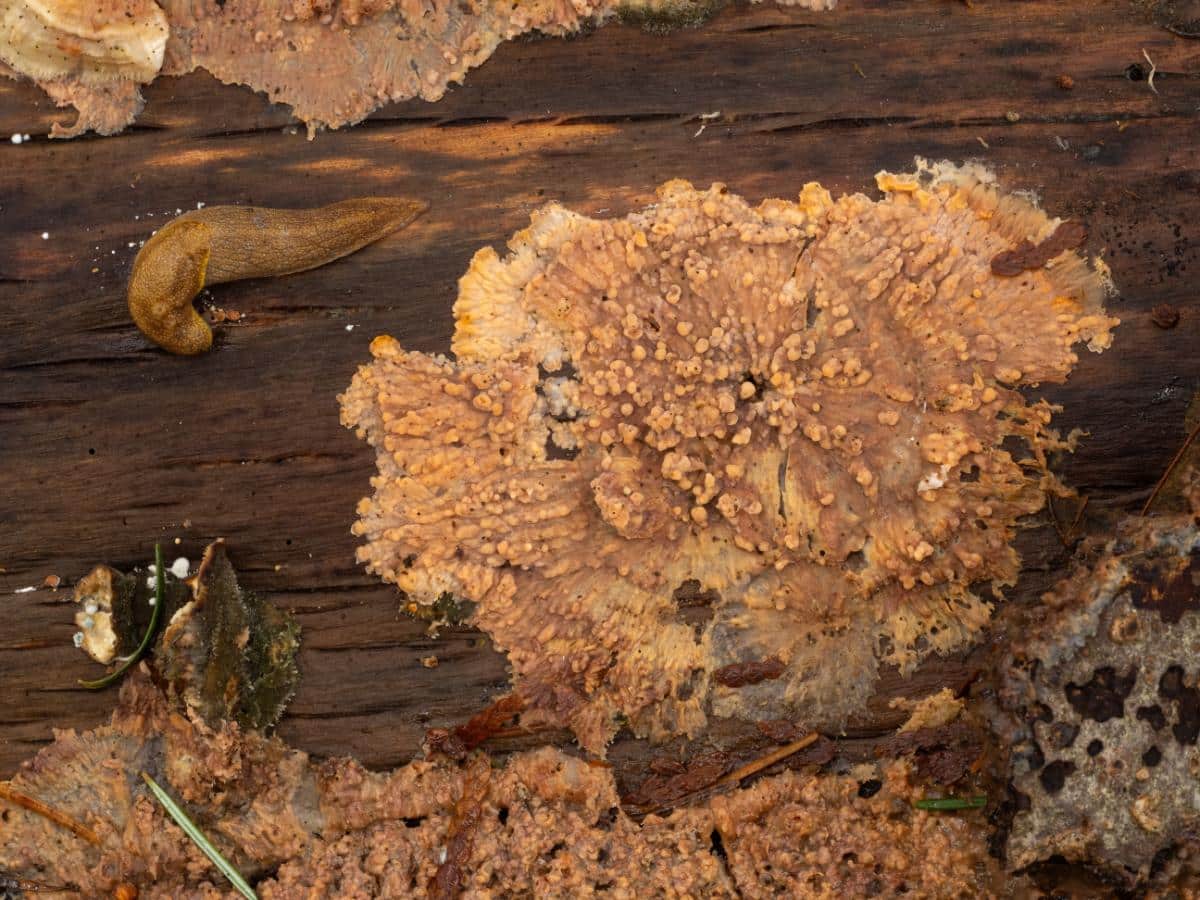
Edibility of Wrinkled Crust Fungus
The wrinkled crust fungus is poisonous, but it is a poor choice for cooking. It has a thin, leathery texture that doesn’t get any softer when you cook it. The fruiting bodies stay tough no matter how long you cook them, which makes them almost impossible to digest.
The way this fungus grows – as a thin layer across wood – means there’s not enough mushroom to harvest. It also doesn’t taste like anything, so there’s no draw to forage it for flavor, either.
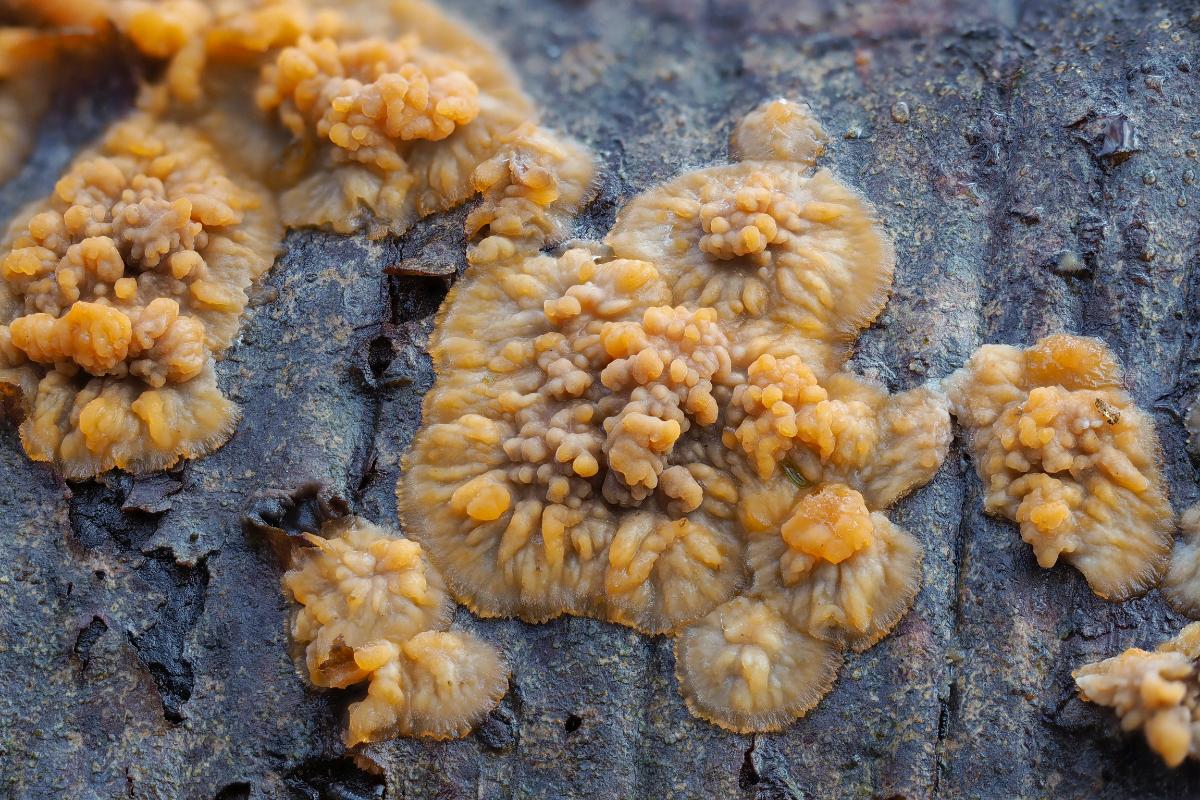
Common Questions About The Wrinkled Crust Fungus
Is wrinkled crust fungus edible?
Is wrinkled crust fungus edible? The wrinkled crust fungus is generally considered inedible due to its tough, leathery texture that doesn’t soften with cooking. It isn’t poisonous, but the taste and texture make it not worth foraging.
Are there any medicinal uses for wrinkled crust fungus?
This fungus is not used medicinally, but the wrinkled crust fungus is being researched for its possible uses in biotechnology. Its strong enzymes may be useful for antioxidant treatments and cleaning up the environment.
How can I distinguish wrinkled crust fungus from similar species?
Unlike some similar-looking fungi, wrinkled crust fungus never produces caps or pores. It has a distinctive radially wrinkled surface and bright orange-pink color.
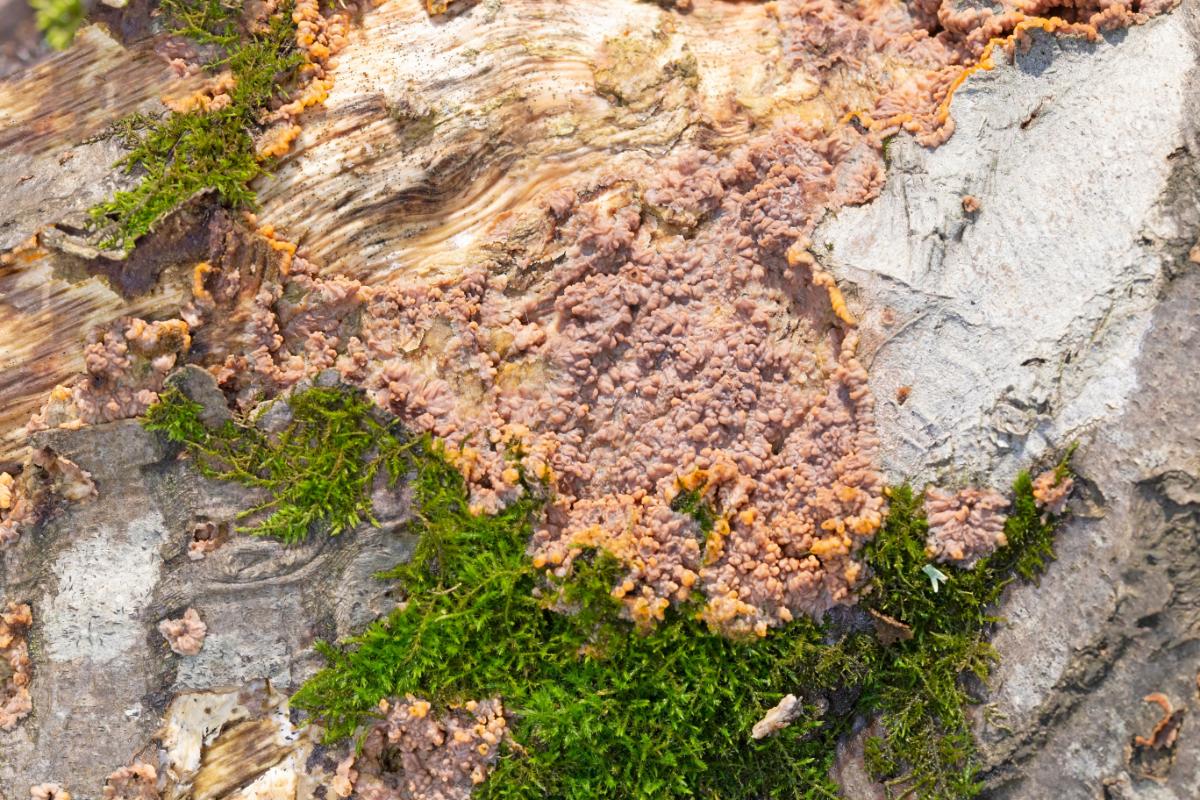

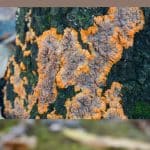


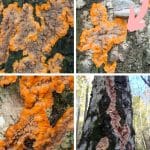
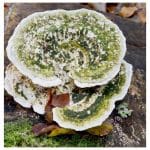
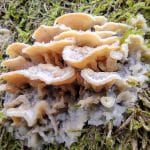
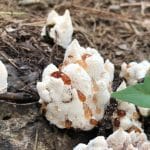
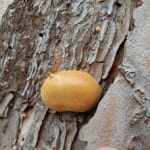
Leave a Reply